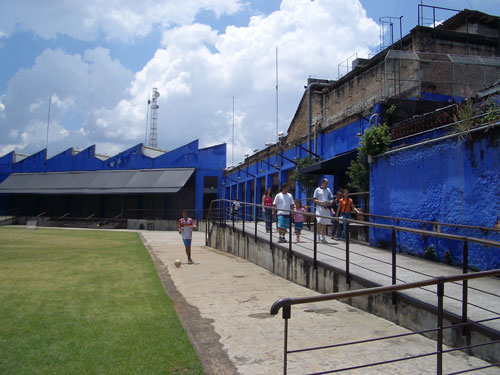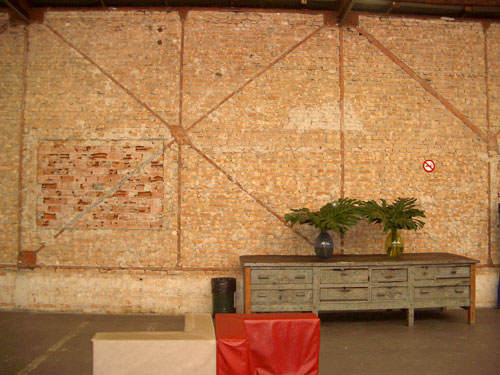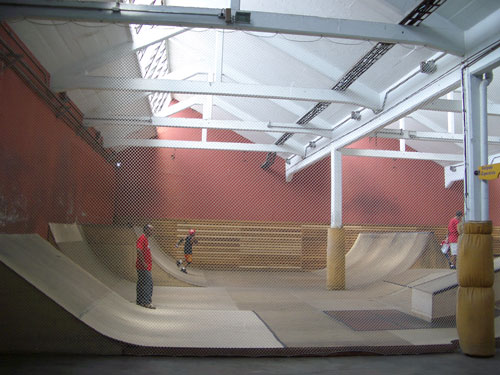Transformação de uma antiga fábrica de 11 mil m² na zona leste de São Paulo, projetada por Gianfranco Vannucchi em 1998. Infelizmente o complexo foi demolido para implementar as futuras instalações, projetadas por Ricardo Chahin.
O complexo funcionou como núcleo catalisador do evento Brasmitte (Arte-Cidade 4) em 1999.
Transformation of an old factory of 11 thousand m² in the eastern region of São Paulo, designed by Gianfranco Vannucchi in 1998. Unfortunately the complex was demolished for the implementation of future installations, designed by Ricardo Chahin.
The complex served as catalyst nucleus of the Brasmitte event (Arte-Cidade 4) in 1999.
www.sescsp.org.br/sesc/hotsites/arquitetura/site/unidade.asp?cd=87720
www.sescsp.org.br/sesc/hotsites/brasmitte/index.htm

01. Entrada

02. Galpão

03. Lounge

04. Espaço esportivo


 Reportagem: De arqueologia a patrimônio. Rafael Evangelista. Revista do IPHAN.
Reportagem: De arqueologia a patrimônio. Rafael Evangelista. Revista do IPHAN. Latin America is experiencing fast desintegration of industrial plants and connected structures. Furthermore the metropolises in these countries are expanding rapidly, contrary to those in Europe and North America, turning the central industrial sites into vital space for urban growth. Factories built in modern architecture are not yet considered endangered and state policies regarding preservation are unclear and difficult to supervise. Extraordinary examples of 2nd generation industries can be found in the São Paulo metropolitan area, São José dos Campos and Sorocaba.
Latin America is experiencing fast desintegration of industrial plants and connected structures. Furthermore the metropolises in these countries are expanding rapidly, contrary to those in Europe and North America, turning the central industrial sites into vital space for urban growth. Factories built in modern architecture are not yet considered endangered and state policies regarding preservation are unclear and difficult to supervise. Extraordinary examples of 2nd generation industries can be found in the São Paulo metropolitan area, São José dos Campos and Sorocaba. ERIH is the European Route of Industrial Heritage, a network of the most important industrial heritage sites in Europe. It is the common link between them all. From disused production plants to industrial landscape parks and inter-active technology museums. The backbone of the route consists of the so-called anchor points: the outstanding industrial monuments in the former heartlands of the Industrial Revolution, Great Britain, Belgium, Netherlands, Luxembourg and Germany. But this is just the beginning. For ERIH intends to grow further – right to the borders of Europe.
ERIH is the European Route of Industrial Heritage, a network of the most important industrial heritage sites in Europe. It is the common link between them all. From disused production plants to industrial landscape parks and inter-active technology museums. The backbone of the route consists of the so-called anchor points: the outstanding industrial monuments in the former heartlands of the Industrial Revolution, Great Britain, Belgium, Netherlands, Luxembourg and Germany. But this is just the beginning. For ERIH intends to grow further – right to the borders of Europe.